Direct Translation via Google Translate. Edited.
by Dmitry Polyakov
[REGNUM] A month and a half after the start of the ground operation in Lebanon, the Israel Defense Forces (IDF) announced the start of the second stage. The main goal is to destroy Hezbollah's missile potential.
The Israeli army has made its largest attempt to break into its northern neighbor's territory. At the same time, the Jewish state continues to carry out daily airstrikes on the "land of cedars." Not only the border areas in the south are under fire, but also the Bekaa Valley and the suburbs of Beirut.
However, behind the military component of the operation there are other aspects.
BETTING ON COLLABORATION
As a result of Israeli bombing in the border zone of Lebanon, more than 40 thousand residential buildings in almost 40 settlements have already been destroyed.
| There is a price for hosting vicious, genocidal scum who turn out not to be strong or clever enough to carry it off. |
It is noteworthy that there are several completely untouched towns in the area. Among them are Rmesh, Ain Ebel, Maroun ar-Ras, Dbel, located in the Bint Jebel region, and al-Klaya in the Marjayoun region. These small towns are populated mainly by Maronite Christians.
| In other words, towns that are not hosting the vicious, genocidal scum, etc.. |
Formally, the reason these cities are not under Israeli attack is the mediation efforts of the Catholic Church. Residents regularly receive assurances from the Apostolic Nuncio (Vatican Ambassador) in Lebanon that the Christian border areas will remain safe. In addition, a diplomatic representative of the Holy See has repeatedly visited the Lebanese-Israeli border since October 7, 2023, including on a humanitarian mission.
But Israel may also have other reasons for leaving Christian cities untouched.
One of the stated goals of the ground operation is to create a buffer zone in southern Lebanon.
| Said buffer zone having been defined by Israel as not hosting that vicious, genocidal scum, etc., exactly like those Christian cities/towns. |
In the recent past, such a project was already implemented in the form of the so-called "South Lebanon Security Zone", which existed from 1985 to 2000. Formally, it was controlled by the South Lebanon Army (SLA), a paramilitary formation consisting of Maronites, Shiites and Druze. However, in reality, the zone was an Israeli protectorate with a military presence of the IDF.
It is noteworthy that many of the AJL commanders came from the cities of Rmesh, Dbel and Ain Ebel, which remain untouched today. In addition, it is known that the inhabitants of Marun ar-Ras and Klaia collaborated with Israel. It is quite possible that today the Jewish state is again returning to the tactics of interaction with the Maronite population. And there are some prerequisites for this.
Currently, Lebanese society is extremely polarized. There is no single position on the Israeli invasion. One part of the citizens supports the continuation of the resistance, while the other blames Hezbollah for the conflict and supports its disarmament, as well as negotiations with Israel.
This position is most often taken by supporters of right-wing nationalist parties, dominated by the Maronite Kataeb and Lebanese Forces. Moreover, during the Lebanese civil war (1975–1990), prominent Maronite families such as Gemayel and Chamoun briefly collaborated with the Jewish state to achieve their own political goals. Israel’s bet on the Maronites may therefore be a well-founded move.
DESTABILIZATION STRATEGY
Israel's current actions are aimed not only at inflicting a military defeat on Hezbollah, but also at significantly reducing support for the movement. This strategy is being implemented through the internal destabilization of its northern neighbor.
The systematic bombing of southern Lebanon, the Bekaa Valley and the suburbs of Beirut suggests that Israel is seeking to displace more than a million Shiites, which in turn is expected to lead to social tensions in the "Land of the Cedars."
Already, about half a million Lebanese have fled the war to neighboring Syria, and almost 900,000 to the interior of the country. This has immediately caused tensions within Lebanese society. In addition, Israel has also begun to strike Shiite areas in cities where the majority of the population is made up of members of other faiths, which makes them see Shiites as a threat to their security.
Therefore, massive Israeli bombings are aimed not only at the military component, but also indirectly intensify interfaith confrontation.
Another goal the Jewish state likely wants to achieve through its attacks is to reduce support for Hezbollah within Shiite society.
In Lebanon, the Shiite voice is not only Hezbollah, but also the Amal party. It is important to note that there are significant socioeconomic differences between their electorates. The first party has always been the focus of the disadvantaged strata of the population, while the second party has been the focus of the middle class and the bourgeoisie, which has created the image of Amal as a more respectable party in the Lebanese political system.
| Does Amal also have a terrorist army, or is that Hezbollah’s special role? |
Moreover, the stratification of Shiites also depends on their places of settlement. The Bekaa Valley is generally home to a poorer population. In southern Lebanon, on the contrary, citizens are more affluent. Most of the leaders of the Shiite community also come from this region. Understanding these differences, in recent years Hezbollah has been actively expanding its support base in the south of the country, taking away the electorate from Amal.
However, it is the southerners who have suffered the most in the current conflict. In order not to lose their support, the Party of God is allocating small compensation: $300 for a family of four and $100 for each adult male.
| They have the funds for that after that billion dollars of gold and cash was burnt up? |
However, these amounts are unlikely to cover all the damage incurred. As a result, there are already signs of discontent in the Shiite community, which may appear in the future.
Another consequence of the Israeli operation was the deepening of differences between Hezbollah's allies. First, tensions increased between Hezbollah and Amal. Following the assassination of Hassan Nasrallah, Amal Secretary General Nabih Berri called for an unconditional ceasefire. His position was supported by Lebanese Prime Minister Najib Mikati and Druze leader Walid "Wally" Jumblatt.
All three agreed to a cessation of hostilities and the implementation of UN Security Council Resolution 1701, which calls for the disarmament of Hezbollah and the redeployment of the Lebanese army to the south of the country.
Secondly, Gebran Bassil, the leader of the Free Patriotic Movement, another Hezbollah partner in the March 8 Coalition, also criticized the Shiite party. In his opinion, the “united fronts” strategy chosen by the “Axis of Resistance,” which implies the unification of all pro-Iranian forces against Israel, was a fatal mistake.
It is noticeable that as the conflict grows, Hezbollah's domestic political partners are increasingly distancing themselves from it and advocating for a ceasefire rather than continued resistance. In the current circumstances, the Party of God will be forced to either take their position into account and not put forward excessive conditions in the negotiations, or it will remain in the minority.
Thus, the current Israeli ground operation pursues several goals at once, and the military aspect is only one of them. In a month and a half of military action, the Jewish state was unable to destroy Hezbollah's military potential. However, it managed to change the conditions in which the Shiite movement exercised its power.
Lebanese society is becoming increasingly divided. Hezbollah is losing support among both its political partners and its supporters. Moreover, it no longer has control over the entire south of the country. These factors, rather than military superiority, may be decisive in the current conflict.
| Those factors result from the IDF’s military superiority, not separate from it. |
|
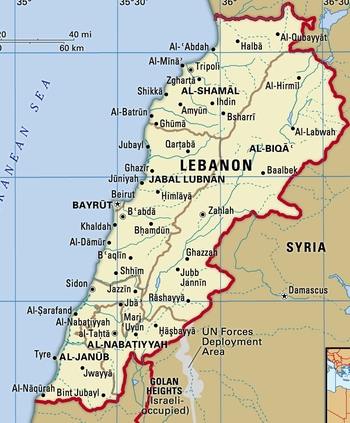 ...The Lebs have the curious habit of periodically murdering their heads of state or prime ministers...
...The Lebs have the curious habit of periodically murdering their heads of state or prime ministers...
 ...The Lebs maintain a precarious sectarian balance among Shiites, Sunnis, and about a dozen flavors of Christians, plus Armenians, Georgians, and who knows what else?...
...The Lebs maintain a precarious sectarian balance among Shiites, Sunnis, and about a dozen flavors of Christians, plus Armenians, Georgians, and who knows what else?...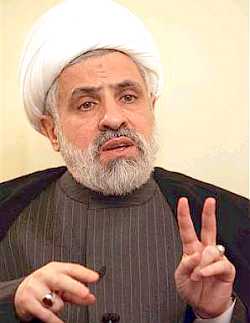
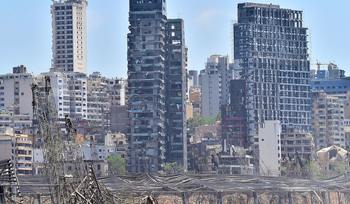 ...The Leb civil war, between 1975 and 1990, lasted a little over 145 years and produced 120,000 fatalities. The average length of a ceasefire was measured in seconds. Only one of those statements is an exaggeration....
...The Leb civil war, between 1975 and 1990, lasted a little over 145 years and produced 120,000 fatalities. The average length of a ceasefire was measured in seconds. Only one of those statements is an exaggeration.... ..always the voice of sweet reason...
..always the voice of sweet reason... ...an Iranian satrapy until recently ruled by Hassan Nasrallah situated on the eastern Mediterranean, conveniently adjacent to Israel...
...an Iranian satrapy until recently ruled by Hassan Nasrallah situated on the eastern Mediterranean, conveniently adjacent to Israel...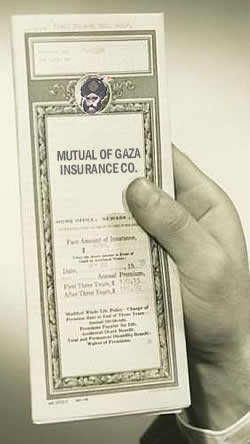 ..not a terrorist organization, even though it kidnaps people, holds hostages, and tries to negotiate by executing them,...
..not a terrorist organization, even though it kidnaps people, holds hostages, and tries to negotiate by executing them,...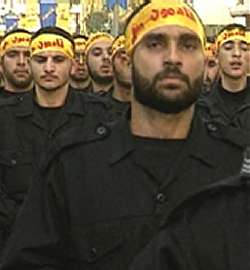 ...The Lebs maintain a precarious sectarian balance among Shiites, Sunnis, and about a dozen flavors of Christians, plus Armenians, Georgians, and who knows what else?...
...The Lebs maintain a precarious sectarian balance among Shiites, Sunnis, and about a dozen flavors of Christians, plus Armenians, Georgians, and who knows what else?...